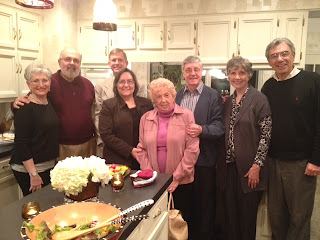The film "Inside Hana's Suitcase" was screened
for more than 1800 students from 7 different schools, in Mobile, Alabama,
on January 5-6, 2012.
UMS-Wright
Holocaust educators' workshop "Hana's Suitcase"
at the University of South Alabama
At Bayside Academy
Murphy High School
Students of Murphy High School
Students from St.Mary Catholic School
With students of Gulf Shores High School
Rickie Voit and Barry Silverman and friends who organized
Mobile Jewish Film Festival
Hana's suitcase: Local students learn from Holocaust victim's suitcase, recovered at Auschwitz
From Mobile Press Register
Published: Saturday, January 07, 2012, 7:25 AM
By Rena Havner Philips
(Press-Register/Bill Starling)Fumiko Ishioka, director of teh Tokyo Holocaust Education Resource Center, answers a question after students from Bayside Academy, Bryant & Gulf Shores high schools and Daphne Middle School watched the film "Inside Hana's Suitcase."
DAPHNE, Alabama -- Young Hana Brady wanted to be a teacher.
Instead, separated from her mother, father and brother in Nazi concentration camps,
she died a gruesome death at the age of 13.
Hana’s story, now, lives on, in the form of her suitcase,
which was obtained by Japanese museum curator Fumiko Ishioka,
who travels the world hoping to teach students the virtues of tolerance.
Hundreds of students from Mobile and Baldwin counties listened to Ishioka share Hana’s story
this week via the documentary, “Inside Hana’s suitcase,” and
question-and-answer sessions at three local schools.
“Hatred still goes on,” said Daphne Middle School eighth-grader Tia Alphonse, 14.
“We need to learn from it so we don’t repeat history. Hana wanted to be a teacher.
Now, she’s teaching us about hatred and love.”
The brown suitcase offered clues about Hana’s life.
Emblazoned on the front in white paint were her name, her birthdate, “5-16-1931,”
and the word “Waisenkind,” which means orphan.
Then there was the number “625” — which, as Ishioka discovered, was Hana’s transport number
as she was moved into Auschwitz in October of 1944,
where she would die in a gas chamber.
After the Gestapo took away her parents, Hana, who grew up in Czechoslovakia, was sent to the Terezin ghetto, where a Jewish artist secretly taught the children to draw. Ishioka found artwork by Hana — penciled drawing of the trees there, of people standing in from of a train, of happier times and picnics.
And then Ishioka learned that Hana’s brother, George Brady, had survived Terezin
and Auschwitz and was living in Toronto, Canada.
George Brady escaped during a 1945 death march, discovering later his sister’s fate.
Ishioka contacted him and the two have joined to tell Hana’s story.
Hana was one of about 1.5 million children slain during the Holocaust.
A total of 6 million Jewish people were killed.
“The Holocaust is not a story of 6 million people dying.
It’s the story of 6 million individuals being murdered,”
Bayside Academy assistant headmaster Dick Cleveland told students
from Bayside, Daphne Middle and Gulf Shores and Bryant high schools on Friday.
Hana’s story, he added, gives students a more personal look at one girl’s life and terrible end.
“The responses from students across the world is universal,” Ishioka said.
“They learn to love Hana. They think of their own families and friends and the life they have,
and about what they would do if faced with prejudice on the school yard.”
The students present at Bayside gave the film —
part of the Mobile Jewish Film Festival — and Ishioka a standing ovation.
Alina Myer, a 17-year-old junior at Gulf Shores High School, said
it was incredible how something as simple as a suitcase could take students on an emotional journey.
“It’s incredibly sad,” said Myer. “It’s really moving to see how someone so young, who never had a chance to really live her life, had her life ended just because of her religion.”
“It’s heart-wrenching,” added Bryant junior Chelsea Prince, 16.
“I can’t imagine going through anything like that. It’s important that we learn from them.”









